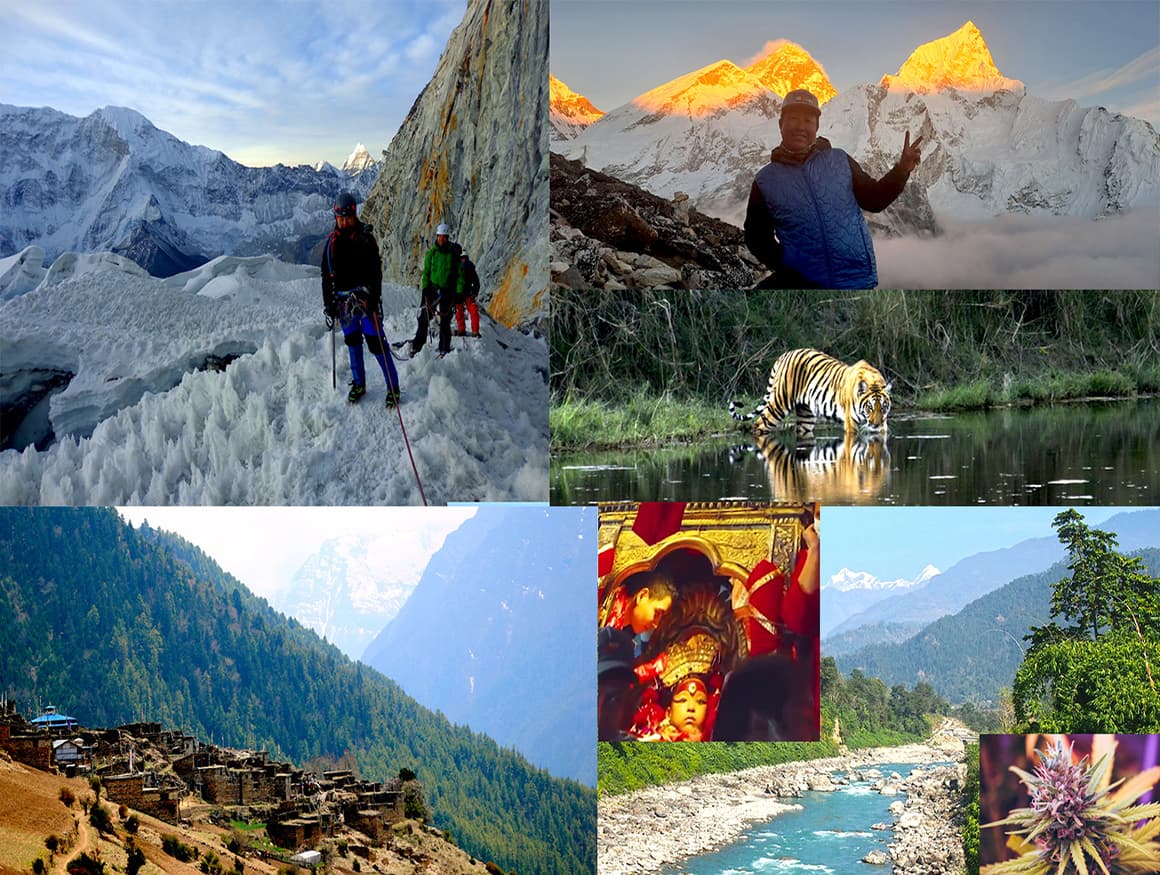7 Best Things to do in Nepal
Experience the best things to do in Nepal with additional value for your wellbeing and local nature at just a worthy deals. Learn about the best trips of Nepal with novel responsibilities.
Nepal, a landlocked country, offers diverse geography and unique histories that appeals travelers seeking thrill, celebrations and restoration. From its towering peaks to lush valleys, Nepal’s landscape invites explorers from around the globe. Wildly celebrated local Jatra and festivals according to Vedic calendar can provide additional flavors to your trips if you visit from March to May and September to December. Please refer to the attached link for Best time to travel in Himalayas. Its blend of cultural richness and warm hospitality adds charm to the breathtaking scenery. Nepal being a heaven for trekkers and climbers for past centuries, it still has managed to keep Himalayan adventure activities at its best despite the fact that climate change impacts on Himalayas are getting irreversible every year. Visitors can also enjoy camping under the stars, wildlife safaris, and exploring historical sites. Nepal on its present territory was recently admitted in 1955 with UN but it has proven history of civilization since the 3rd century BCE as Lumbini in Nepal got enlightened by Lord Buddha and also from the age of Earth’s creation. Nepal’s unique blend of adventure, culture, and natural beauty ensures an unforgettable journey for all who visit this Divine country Nepal.
In the recent years after the year 2019 the tourists visiting Nepal, Tibet and Bhutan are constantly increasing their interests in natural restoration activities during the trip. 75% of the tourists doing trips in Nepal had booked Yoga and meditation packages as addition while the local trekking companies are inserting the advanced physical fitness and health activities on their regular treks. Himalayan Adventure Therapy proudly operates Himalayan trips with the experts capable of providing medical Yoga Therapy sessions to strengthen and heal travelers. Hence, Nepal offers everything to the world.
7 best things to do in Nepal are highlighted as below:
1. Mountain Expedition
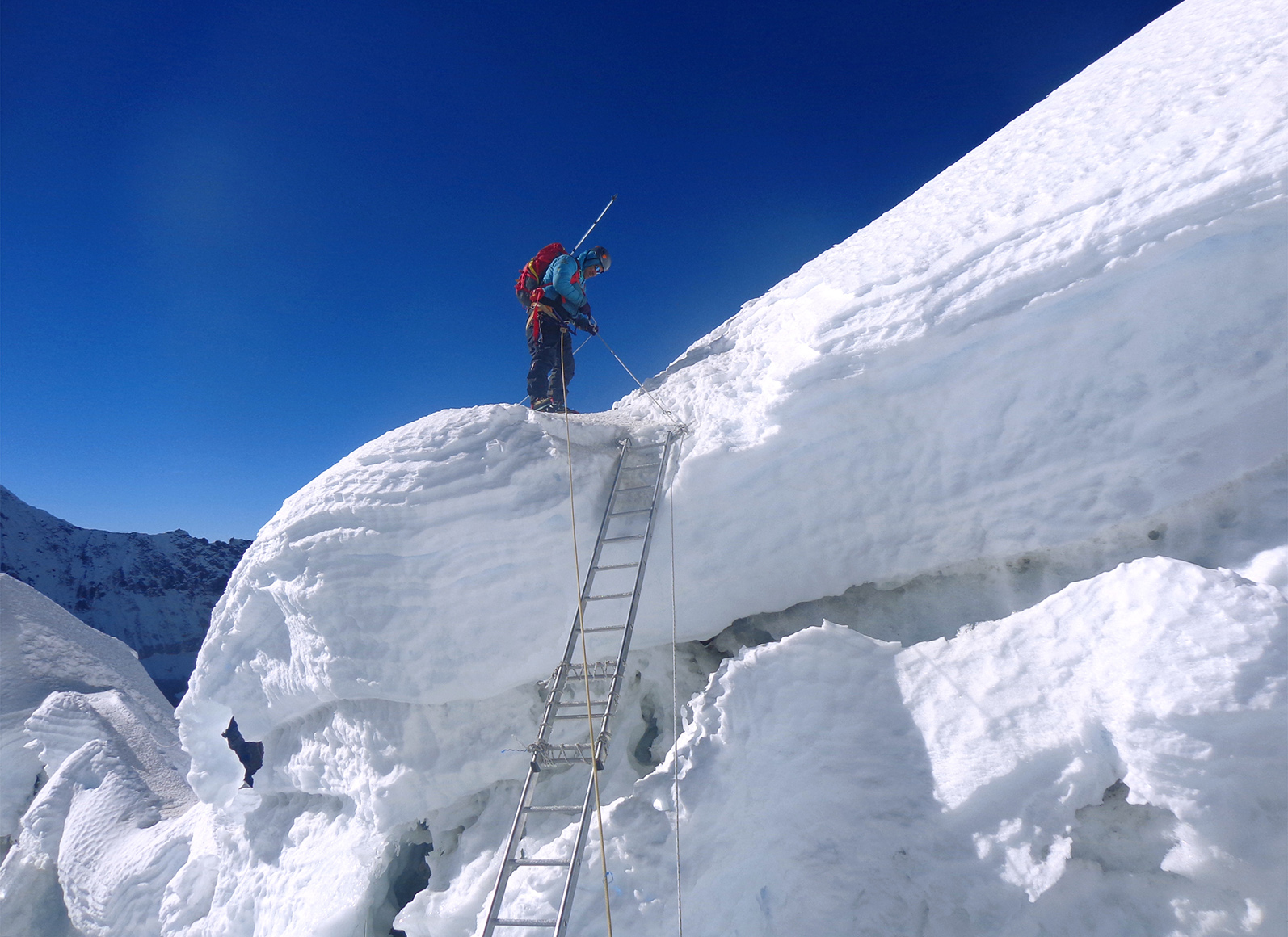
The allure of mountaineering has propelled Nepal onto the global stage, captivating the imaginations of adventurers worldwide and fostering a steady stream of tourists eager to conquer its challenging peaks.
Nepal is renowned for its stunning Himalayan peaks, including the world’s tallest, Mount Everest. The country’s rugged terrain, diverse landscapes, and rich cultural heritage attract adventurers and mountaineers from around the globe. Embarking on a mountain expedition in Nepal offers profound dimension to the expedition making it one of the best thing to do in the country. Nepal undoubtable is the best destination for mountain climbers.
The mountain expedition lovers around the world will find Nepal as their heaven because it has mountains to climb from novice to the veteran climbers. The geographical location, structure and the expedition leaders who are born and raised in Himalayas and proudly known as Sherpas are the best combination for expedition lovers and make it one of the best things to in Nepal.
However, it’s essential to approach mountain expeditions in Nepal with proper preparation, respect for the environment, and consideration for local communities. Responsible tourism practices ensure that these extraordinary natural landscapes can be enjoyed for generations to come.
2. Trekking and hiking in Nepal

Trekking and hiking activities are the most popular activities among the foreign tourists coming to Nepal and these days famous among the locals of the country. The thrilling trekking spot on the entire globe is Nepal with its unlimited trekking trails, easy to access Himalayan trails below the mountain caps of Nepal, Bhutan and Tibet. Trails and adventure series for seekers never ends here. Nepalese team of climbers even has extended its hand to Pakistan and other region of Great Himalayas and Hindu Kush Himalayas in search of new horizons of mountain climbing. Moreover, Nepal’s unique and easily adoptable mountain terrain provides wide variety of gentle hiking, trekking and climbing routes suitable for beginners to seasoned mountaineers or thrill seekers. From well-known peaks like Everest and Annapurna to lesser-known gems, there’s something for everyone looking for an adventure in Himalayas. The best trekking trail options in Nepal are as listed below:
A) The Everest Region:

Anybody who has an idea about nature or the highest point on earth; mighty Mt. Everest would definitely wish to visit Everest region either it can be for just view, or reach base camps or summit its peak. Starting from Lukla, trekkers make their way through picturesque Sherpa villages like Khumjung Village, Namche Bazaar, Tengboche, and Dingboche. The trail dominantly provides stunning views of Mt. Everest, Lhotse, and Ama Dablam. Reaching Everest Base Camp is a once-in-a-lifetime experience, offering a glimpse into the life of mountaineers among them some preparing to reach the summit of Mt. Everest with extraordinarily breathtaking Khumbu Glacier.
There are as we said has countless ways to explore the region, but the most popular variations of Everest region treks are as below:
I) Everest Base Camp via Gokyo Lakes Trek
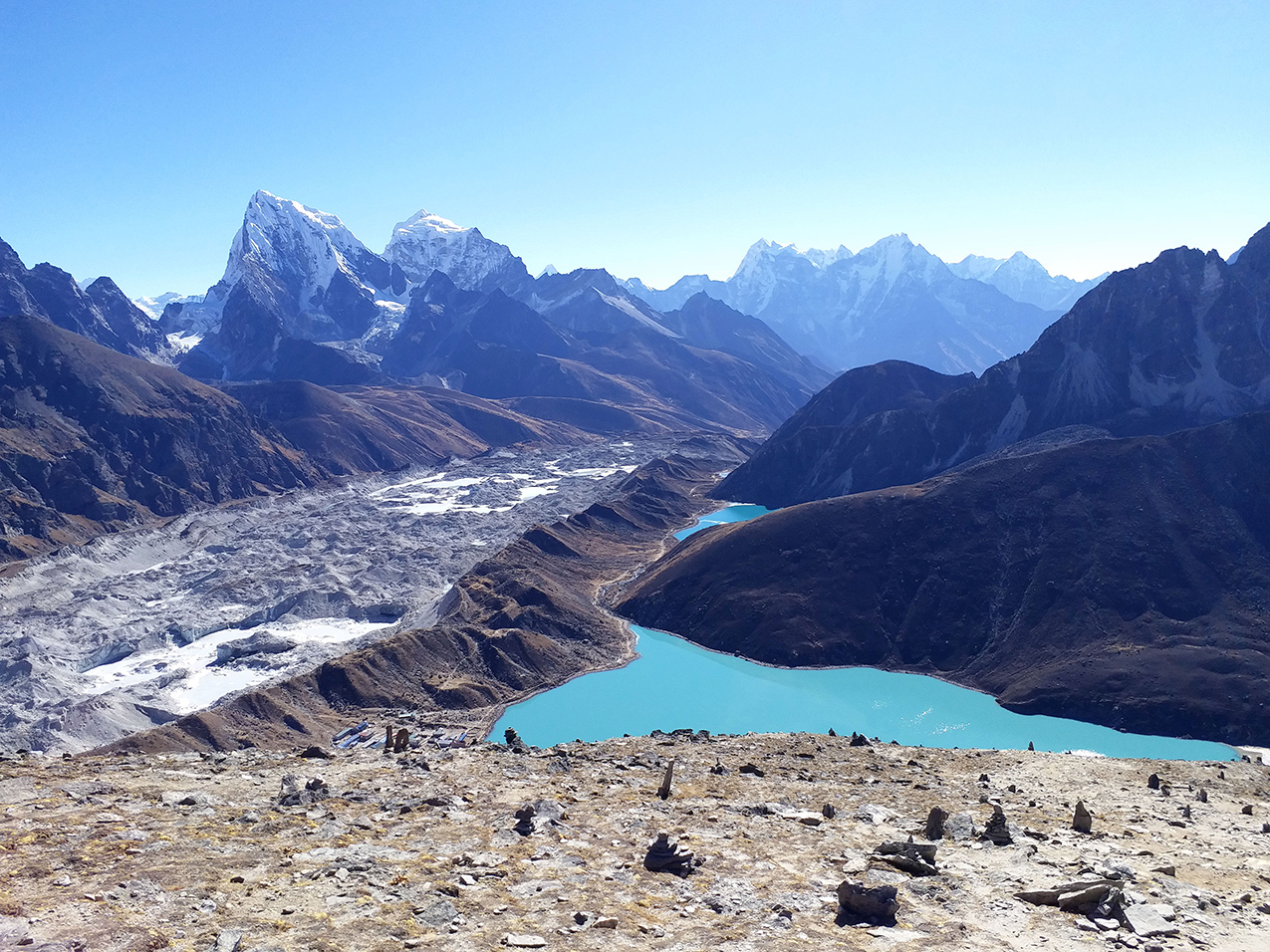
A little harder than Everest Base Camp alone but with beautiful Himalayan lakes performing its color magic by changing it to Deep blue, Sky Blue, Torques Green and snow white depending the surrounding climate. This route takes trekkers through the serene Gokyo Valley, where they can marvel at the series of Gokyo Lakes from 1st to 5th and witness panoramic views from Gokyo Ri (5,344m) before joining the classic Everest Base Camp trail.
II) Everest High Passes Trek
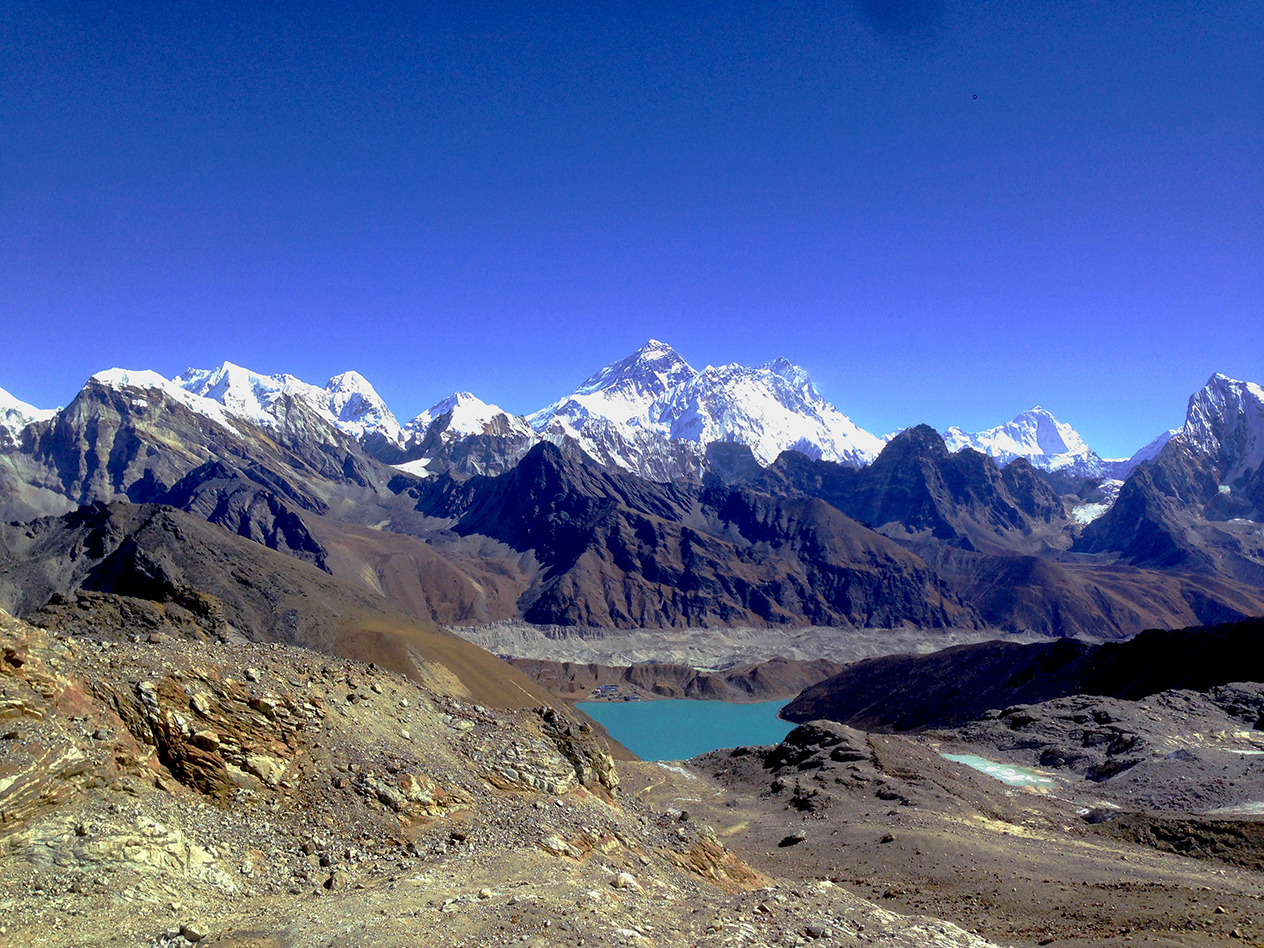
Trekkers with previous experiences walking on the similar trails and willing to challenge their limits opt for this itinerary Everest high passes trek primarily involves crossing Cho La Pass, Renjo La Pass, and Kongma La Pass, offering unparalleled views and an adrenaline-pumping experience. There are other passes like Pheriche Pass, Amphu Labtsa pass, Zatrwa La Pass, Mera La Pass, Lobuche Pass,Thukla Pass in Everest region which are less common compared to those mentioned above.
III) Everest View Trek
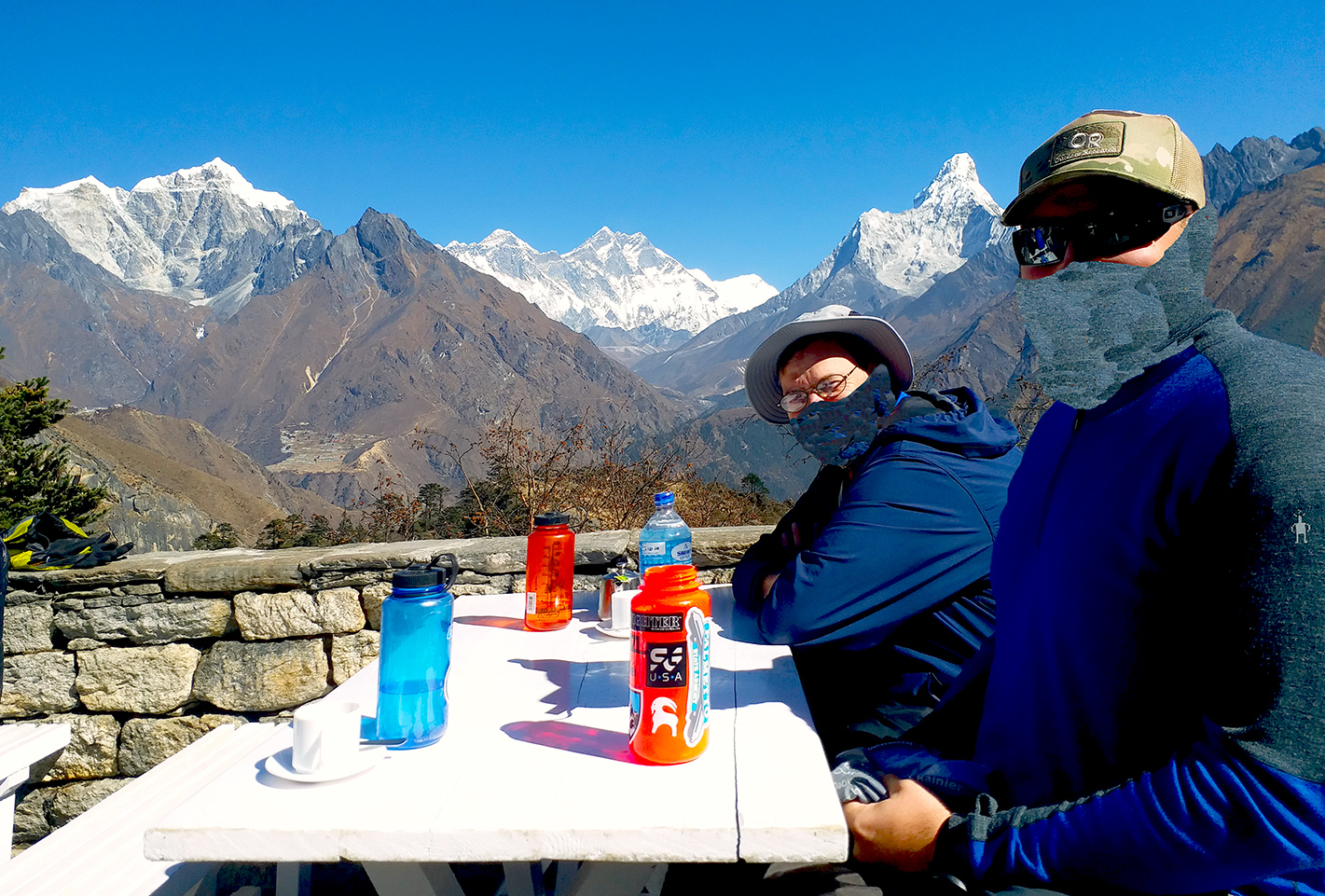
The Everest view trek involves lower elevation of the Everest region exploration and gentle treks suitable for beginners and individuals who wish to see Mt. Everest despite their personal challenges. Perfect for those with limited time or seeking a less strenuous option, this trek focuses on capturing stunning views of Everest and surrounding peaks from viewpoints like Everest View Hotel, Kongde Village, Namche Bazaar, Tengboche Monastery and Khumjung village, providing a taste of the Everest region’s beauty without the full scale treks.
B) Around Annapurna Region:

Second most famous trekking region after Everest, known for its diverse landscapes and cultural encounters, which normally begins from either Besi Sahar, Ghandruk or Jomsom. Trekkers journey through wet and lush forests, terraced fields, and traditional Nepali villages, with panoramic views of Mt. Annapurna Ranges (I,II,III and IV) standing tall from 7,525 meters to 8,091 meters at just 22 to 31 Kilometers distance from Thorong La Pass. Similarly other Himalayan ranges in closer distance will enrich every day walk in the horizon and fascinating local settlements on the ground. The view of mountains with daily changing angle of view certainly satisfies your seeking soul. The mountains mostly admired during the trip to Annapurna region are Mt. Dhaulagiri 8,167 meters, Mt. Nilgiri 7,061 meters, Tilicho Peak 7,134 meters, Mt Gangapurna 7,455 meters and Machhapuchhre 6,993 meters. The highlights of this region are also as competitive as of the Everest region. Thrilling trips to cross the highest passes on Earth like Thorong La Pass (5,416 m), Kang La Pass (5,297 m), Mesokanto La Pass (5,237 m), Eastern Pass (5,373 m), Naar Pass (5,400 m), Phu Pass (5,050 m), Meta Pass (4,635 m), Yarcha Pass (4,860 m). Manang and Mustang are among the major attraction area of this trip being the last forbidden kingdom of Nepal. Travelers are offered with numerous variations of the trips here however trendy ones are given below:
I) Annapurna Base Camp Trek

The most renowned trail leading trekkers to the base of Mt. Annapurna and Machhapuchre, offering stunning views of aligned natural beauty with Annapurna and Machhapuchhre peaks.
II) Annapurna Sanctuary Trek
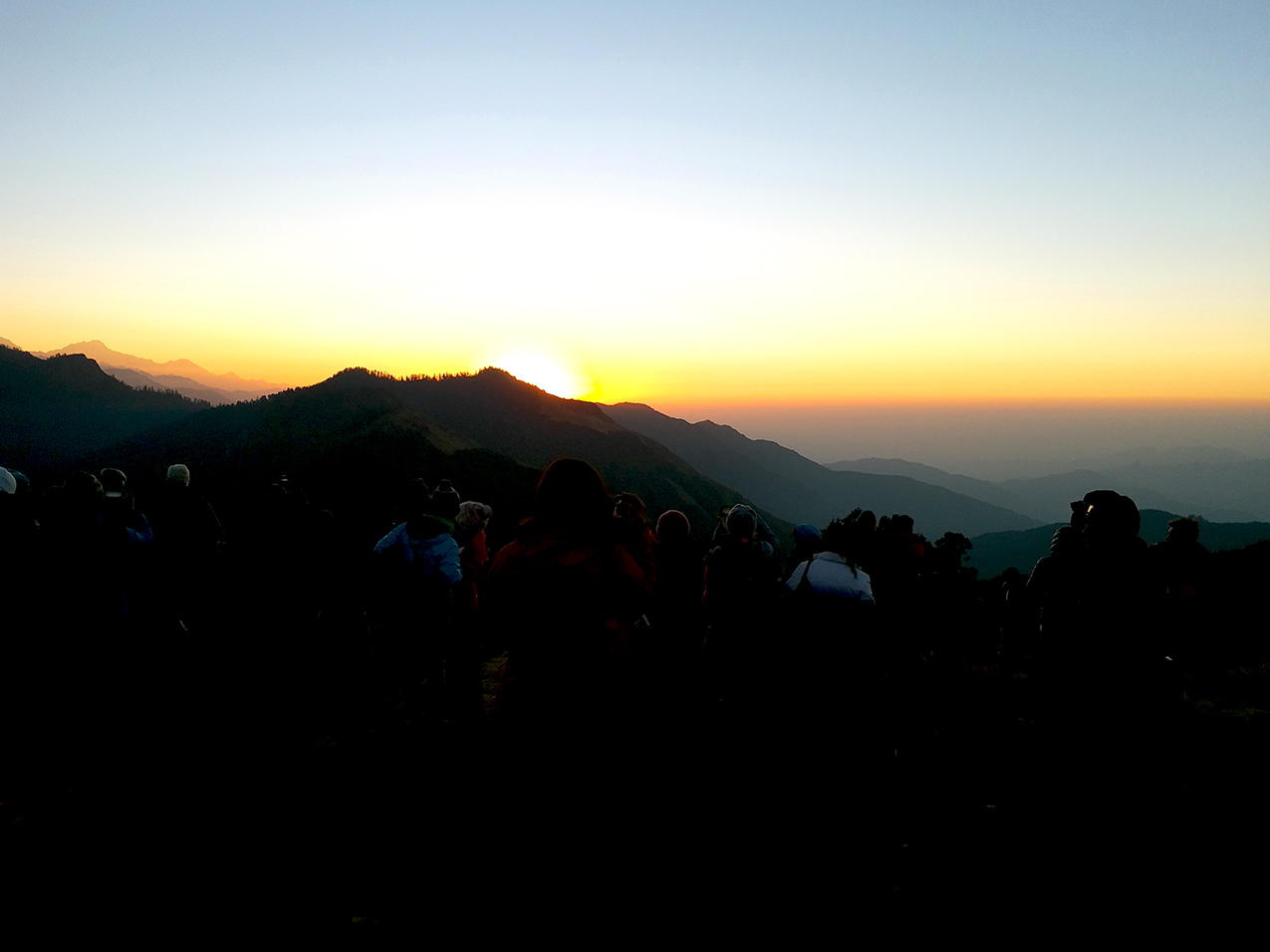
The trail passing through the most famous Himalayan sunrise view point Pooh Hill comes with this itinerary. Annapurna sanctuary as named goes through serene nature and villages of Annapurna region.
III) Annapurna Circuit Trek Remote Trail
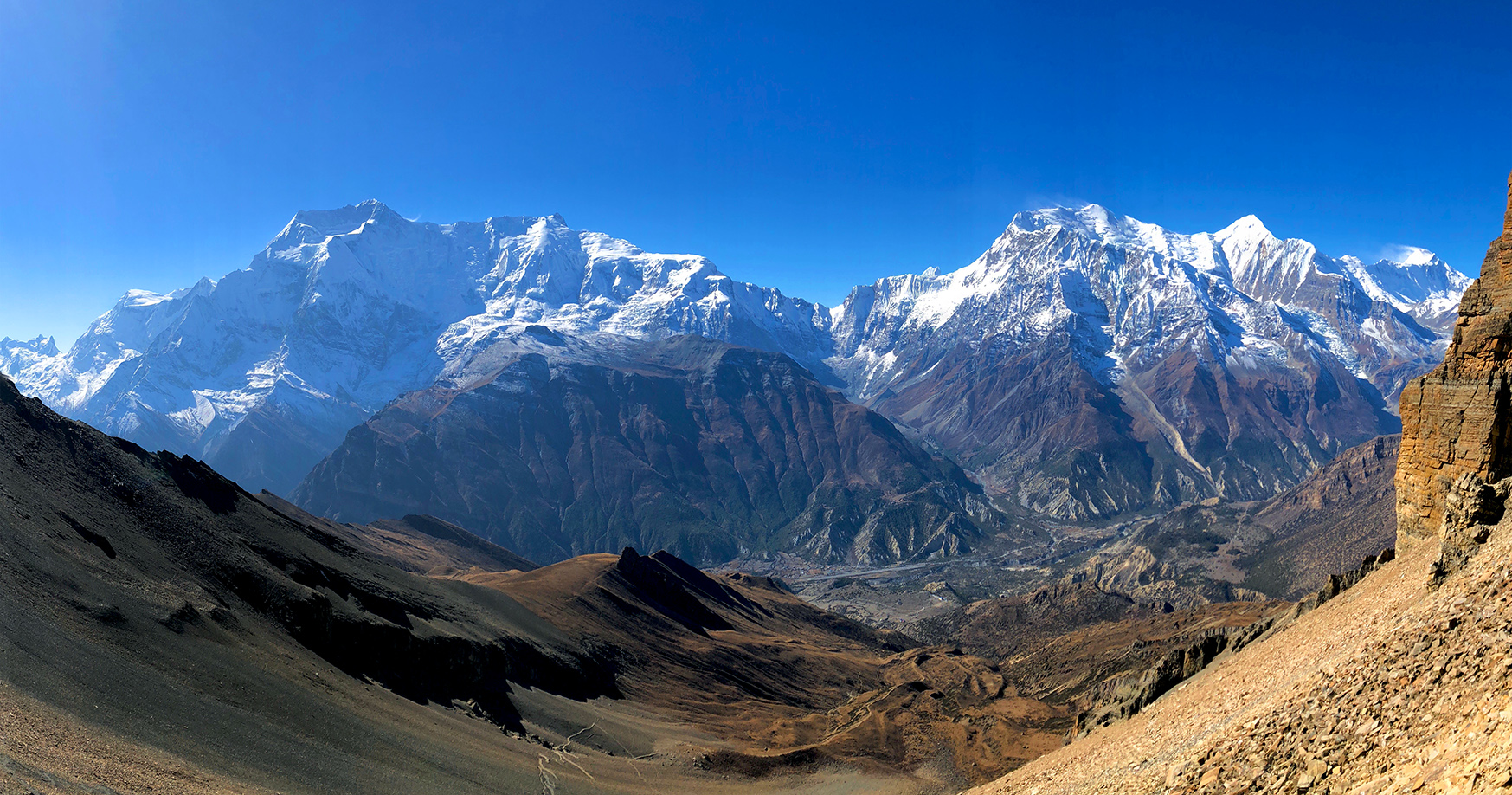
The most remote villages of Nepal Naar and Phu is covered in this trail with options to enhance by by encorporating mountain passes like Kangla, Mesokanto La, Thorong La, Naar and Phu Pass during the trip. This trail coveres Tilicho Lake with beautiful settlements of Manang. Venturing off the beaten path to explore remote and less-traveled sections of the Annapurna Circuit.
C) Langtang Valley:
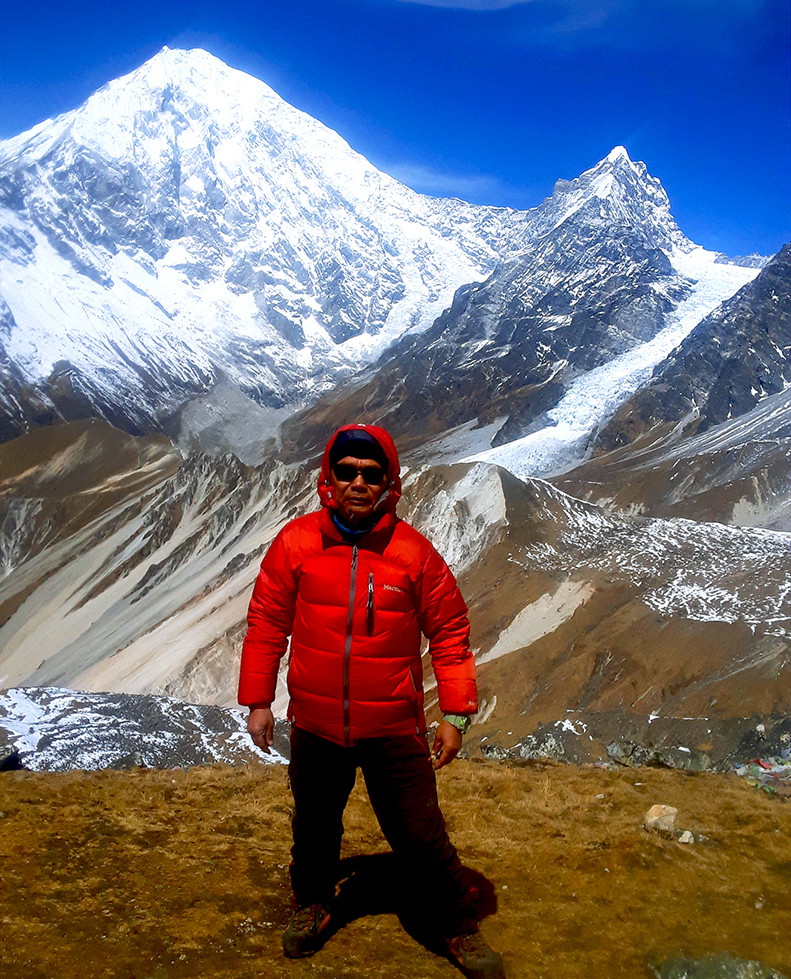
For those seeking a shorter trek without compromising on natural beauty, Langtang Valley is the perfect choice. Starting from Syabrubesi, the trail leads through dense forests of rhododendron and bamboo, offering encounters with diverse flora and fauna. Trekkers can enjoy stunning views of Langtang Lirung and other snow-capped peaks. The region also provides opportunities to explore traditional Tamang villages and experience their unique culture.
D) The Manaslu Circuit:
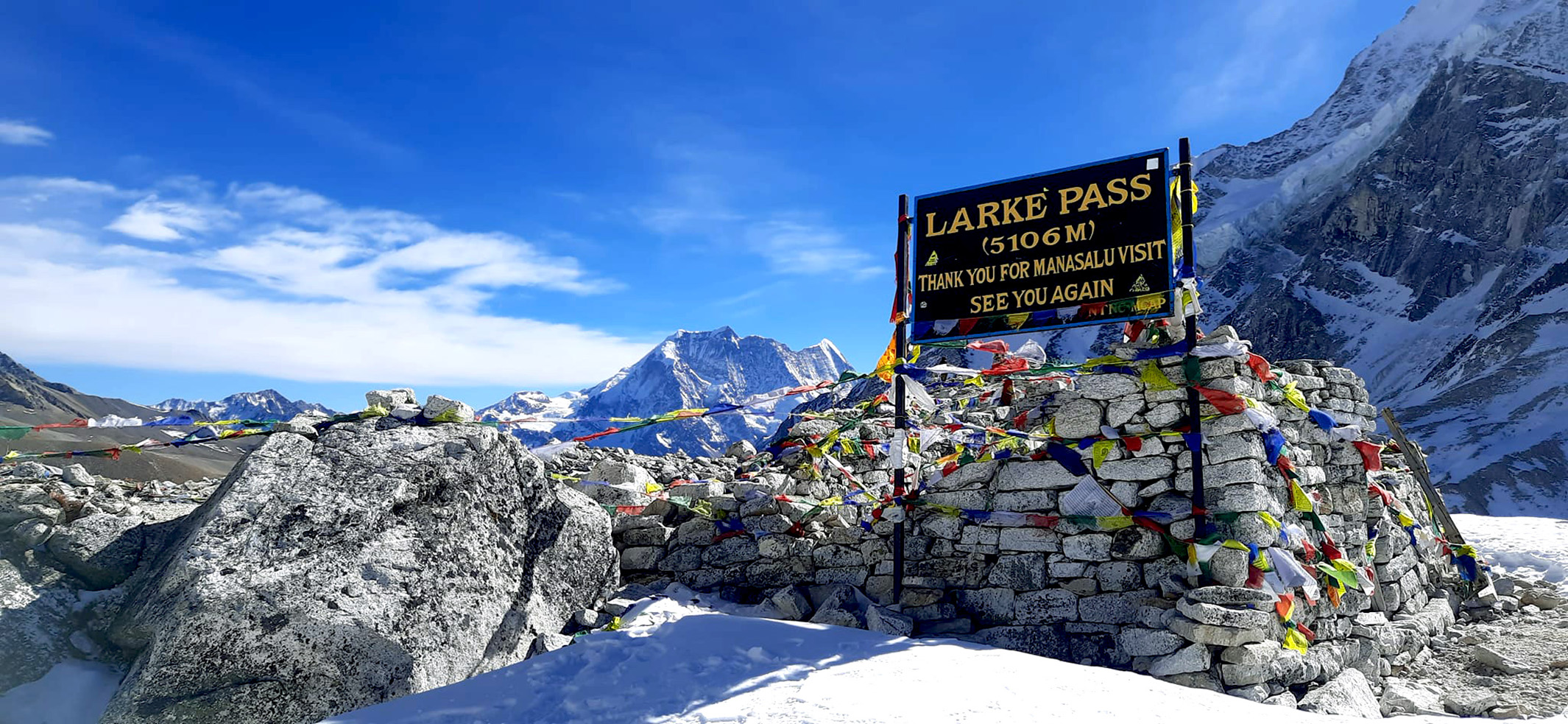
The Manaslu Circuit, known as a remote and less crowded trail, is a hidden gem for trekkers seeking solitude amidst pristine landscapes. Starting from Soti Khola, adventurers embark on a journey through untouched terrain, crossing picturesque suspension bridges and encountering diverse ethnic communities. This trail offers breathtaking views of Mount Manaslu, the eighth-highest peak globally, and winds through the Manaslu Conservation Area, a sanctuary for rare wildlife like the elusive snow leopard and the charming red panda.
E) Upper Mustang:
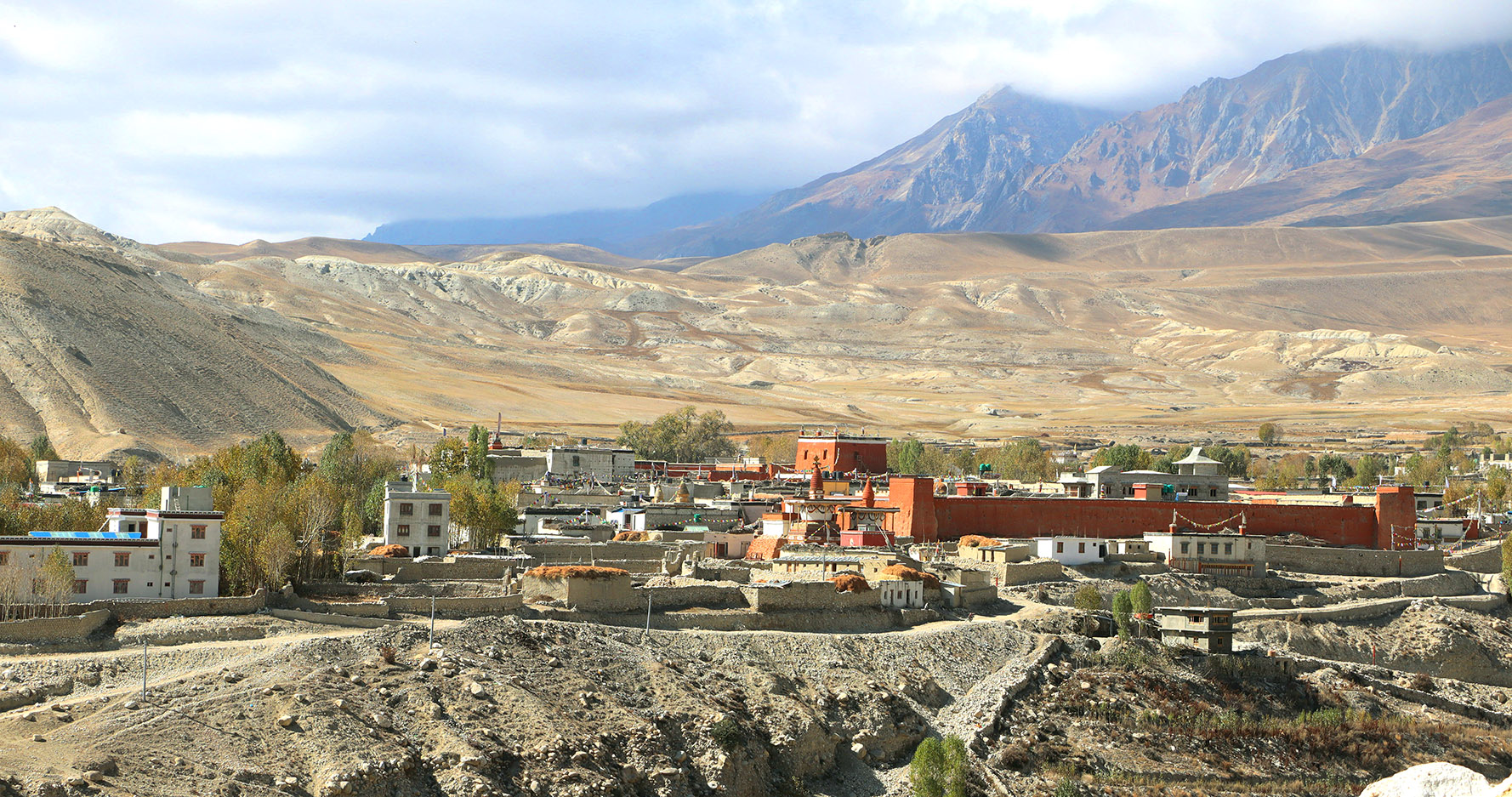
Trekking in Upper Mustang feels like stepping into a different world altogether. This restricted area, once a separate kingdom, The former forbidden kingdom of Upper Mustang refers to a remote region in Nepal that was once an independent kingdom. It retains its ancient Tibetan culture and unique landscapes. The trek begins from Jomsom and leads through arid landscapes, ancient monasteries, and cave dwellings carved into cliffs. Trekkers can marvel at the mystical beauty of the walled city of Lo Manthang and explore its rich cultural heritage.
F) The Kanchenjunga Region:
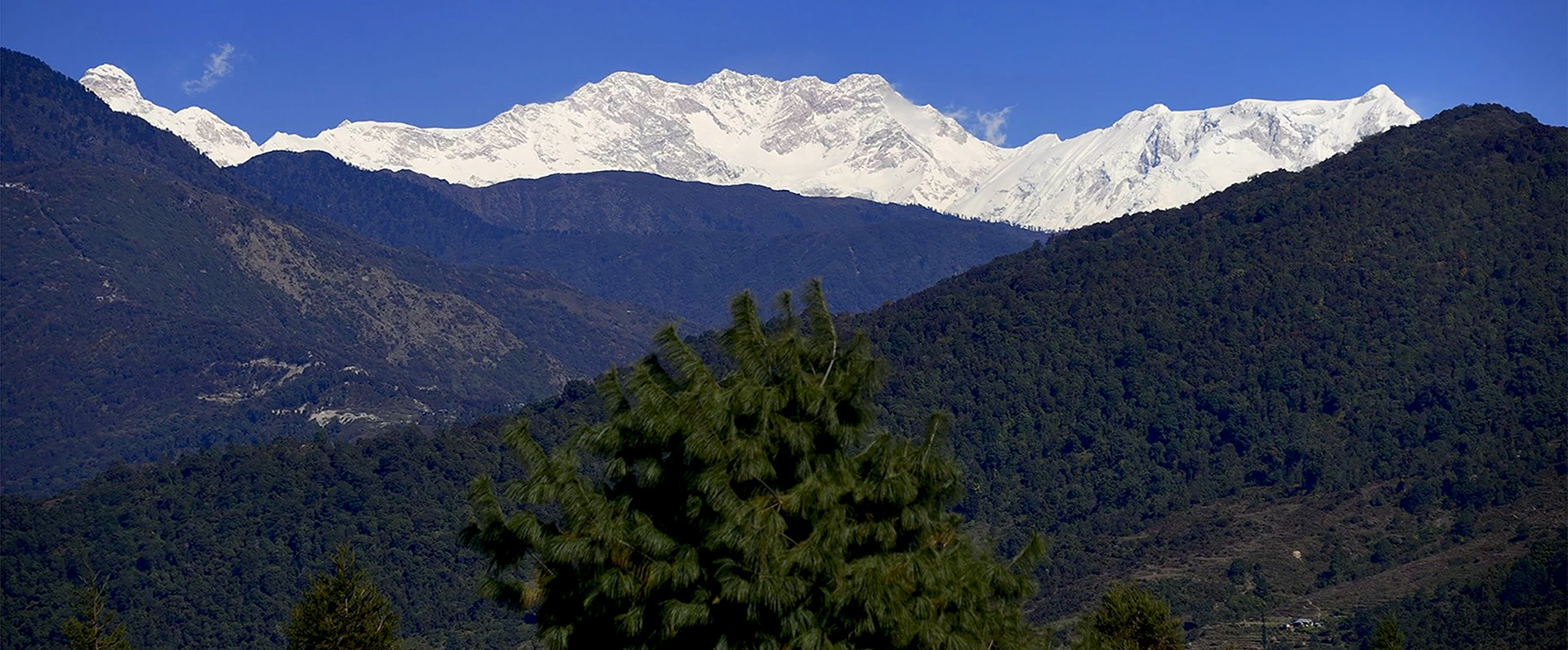
The Kanchenjunga region, beginning from Taplejung, offers a remote and less crowded trekking experience. Amid lush forests, alpine meadows, and villages, trekkers enjoy views of Mount Kanchenjunga and other Himalayan peaks. Encounters with ethnic communities like Rai, Limbu, and Sherpa add cultural richness, making it ideal for those seeking solitude amidst pristine wilderness.
Nepal’s trekking and hiking opportunities are as diverse as its landscapes and cultures. Whether you’re a seasoned trekker seeking the ultimate challenge or a novice looking for a memorable adventure, Nepal has something to offer for everyone. From the towering peaks of Everest to the remote trails of Upper Mustang, each trek promises breathtaking scenery, cultural immersion, and unforgettable experiences amidst the awe-inspiring beauty of the Himalayas. So, lace up your boots, pack your backpack, and get ready to explore the wonders of Nepal on foot.
3. Wildlife and Nature of Nepal
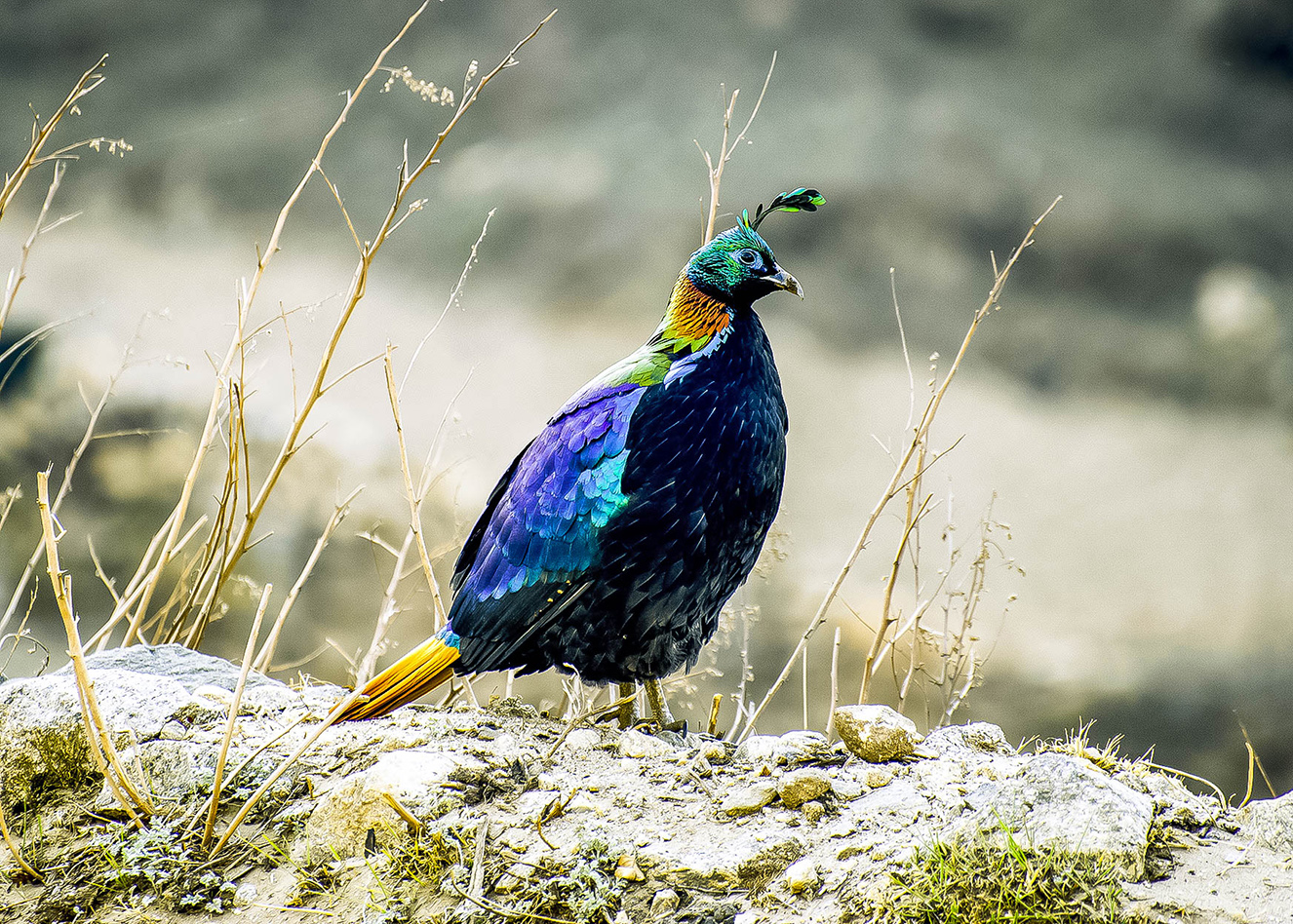
Nepal isn’t just about the majestic Himalayas. It’s a land brimming with diverse wildlife and breathtaking nature, making it an ideal destination for eco-tourists and nature enthusiasts. Here’s why Nepal should be your top choice has in fact the best variations of wildlife and biodiversity because:
Of it’s Unparalleled Biodiversity
From Terai Jungles to Alpine Meadows: Travel from the steamy jungles of the lowlands, teeming with one-horned rhinos, Asian elephants, and Royal Bengal tigers, to the snow-capped peaks where elusive snow leopards roam.
Is A Haven for Rare Species
Spot the vibrantly colored red panda, the national animal, or witness the graceful dance of the endangered Bengal florican.
Also Birdwatcher’s Paradise
With over 880 species, Nepal boasts diverse birdlife. Listen to the echoing calls of hornbills in the rainforests or watch the majestic Himalayan griffon vultures soar over the valleys.
About to Extinct and Only Existing Wildlife Experiences
Yeti, Red Panda, Snow Leopard to Rhinos appearing locally in the remote settlements of this Himalayan Kingdom has always inspired its responsible stake holders to protect the natural existence or we say habitat of wild angels. Embark on an unforgettable jeep safari or elephant back ride through the verdant Chitwan National Park or Bardia National Park, spotting a variety of wildlife in their natural habitat. Nowadays, Koshi Tappu Wildlife Reserve also provides facility of Jeep safari.
Birdwatching Tours
The Green zone of Nepal below the Himalayas and above from around 700 meters, there are numerous variety and herds of bird species mostly unlisted due to lack of proper bird recognition research works. Join a guided birdwatching tour and witness the stunning avian diversity, from brightly colored pheasants to elusive eagles.
Nature Photography
Capture breathtaking landscapes, from snow-capped peaks reflected in serene lakes to vibrant birds in flight.
Beyond Wildlife
Unique Flora: The deliberately increasing value of herbal products in daily life, the origin of all those claimed herbal products if they actually are natural must have sourced raw materials from the Himalayas. Witness the vibrant display of wildflowers in spring or trek through alpine meadows bursting with colorful flora.
Spiritual Connection: Either explore the cultural Hindu Crematoria, temples of highest beliefs and its daily rituals. Short and sweet hikes from small towns and villages to sacred Buddhist monasteries nestled amidst the mountains or experience the serenity of remote villages untouched by modern life.
Sustainable Tourism: As Himalayan Adventure Therapy offers opportunity for climate change researchers with climate data station accesses. Also the company is leading nature restoration and conservation campaign of local community with its periodic and innovative approaches. Nepal offers numerous eco-lodges and responsible tourism initiatives that prioritize conservation efforts. Choose a trip that minimizes environmental impact and supports local communities.
4. Rural Life Experience in Nepal

Nepal is famed as natural country with history of ancient civilizations which used to be the most festive, ecologically balanced and rural. Here, remote life experiences take on a whole new meaning, as visitors immerse themselves in the tranquility of nature while embracing the rich tapestry of Nepalese life. Local festivals and special local extreme adventure experiences in naturally wild setup is one must try things for tourists visiting Nepal. Honey Hunting got attention of many foreigners recently but there are multiple such rituals performed by local living in different part of this country.
Rural and Remote Life Experience in Nepal details
Nepalese culture reveres gods and goddesses, perceiving them as divine manifestations. With Hinduism and Buddhism as predominant religions, rituals, offerings, and festivals are common expressions of this reverence. Overall, Nepal’s spiritual fabric is woven with a profound respect for the divine, enriching the cultural experience for visitors seeking solace and adventure amidst its breathtaking landscapes.
Beyond its natural wonders, Nepal also offers a deeply spiritual and culturally rich environment. Home to countless temples, monasteries, and sacred sites, the country is imbued with a sense of tranquility and reverence. Whether participating in a traditional puja ceremony or joining a meditation retreat in the foothills of the Himalayas, visitors have ample opportunities to explore their spiritual side and connect with the essence of Nepal’s culture.
Moreover, Nepal’s remote villages provide a glimpse into a way of life that is deeply rooted in tradition and community. Far removed from the hustle and bustle of modern civilization, these villages offer a slower pace of life were simplicity reigns supreme. Here, one can experience the joys of communal living, where neighbors know each other by name and every festival is celebrated with fervor and enthusiasm. The 3 dominant geographic region of Nepal and why it is best:
A) Terai Region
The region regularly inhibited by Tharu Community: The Tharu people are an indigenous ethnic group residing in the Terai region, particularly in places like Chitwan, Bardia, and Kailali districts. They have a unique culture and lifestyle. One unusual aspect of their lifestyle is their cuisine, which includes dishes such as “Bharta,” made from red ants and their eggs, and “Ban Taas,” a dish made from fried insects. Additionally, some subgroups within the Tharu community, such as the Musahar, traditionally consume rodents like mice and rats as part of their diet.
B) Hilly Region
The most ancient Raute Community: The Raute people are a nomadic indigenous group inhabiting the hills of western Nepal, particularly in the forests of Dailekh, Kalikot, and Jajarkot districts. They lead a semi-nomadic lifestyle, depending on hunting, gathering, and foraging for their sustenance. One of the most distinctive aspects of their lifestyle is their reliance on a hunter-gatherer lifestyle in the modern world, making minimal contact with settled communities and maintaining their traditional customs and practices.
C) Himalayan Region
Friends and families of Yeti, Sherpa Community: The Sherpa people are well-known for their resilience and mountaineering skills, inhabiting the high Himalayan regions of Nepal, particularly in the Solu Khumbu district. While their lifestyle is primarily centered around mountaineering and guiding trekkers and climbers, they also have unique cultural practices. One notable tradition is their cuisine, which includes dishes like “Sherpa stew” (a hearty meat and vegetable stew) and “Tsampa” (roasted barley flour), which is a staple food. Additionally, they have their own religious practices influenced by Tibetan Buddhism, with monasteries and prayer flags dotting the landscape.
These are just a few examples of antique communities and lifestyles found across Nepal’s three regions. Each community contributes to the country’s cultural richness and diversity.
5. Festivals and Culture of Nepal
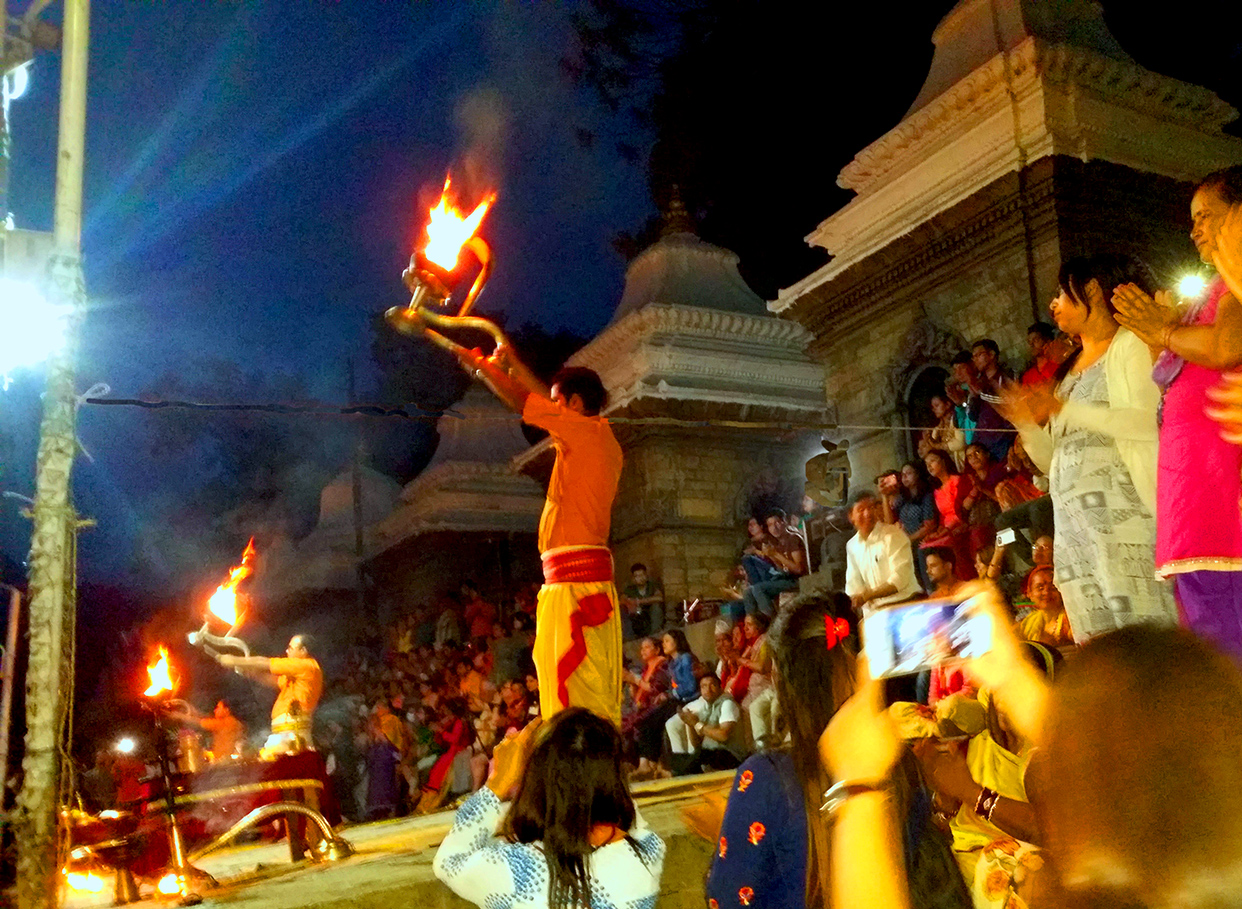
Nepal is one of the world’s most festive country with its record breaking 4 per month widely celebrated events in average. Nepal celebrates a myriad of festivals throughout the year, each with its own unique significance and cultural importance. Below are the list of festivals celebrated in Nepal ranked on the basis of highest volume of locals celebrating it. The best of local festivals celebrated in Nepal are as below:
A) Dashain:
Dashain is the biggest and most widely celebrated festival in Nepal, usually occurring in September or October. It lasts for 15 days and is a time for family gatherings, feasting, and worship. The festival honors the victory of good over evil, symbolized by the triumph of the goddess Durga over the demon Mahisasur. During Dashain, people fly kites, play traditional games like swing rides, and receive blessings from elders. The festival concludes with Tika, where elders apply vermilion and rice to the foreheads of younger relatives as a symbol of protection and blessings.
B) Tihar (Deepawali):
Tihar, also known as the Festival of Lights or Deepawali, is celebrated over five days, usually in October or November. Each day of Tihar is dedicated to different animals and deities, such as crows, dogs, cows, and Laxmi, the goddess of wealth. People decorate their homes with colorful lights, rangolis (intricate patterns made with colored powders), and oil lamps to welcome prosperity and good fortune. During Tihar, sisters perform special rituals for their brothers wellbeing, and there are various cultural performances and processions.
C) Holi:
The most famous festival of Nepal among foreign tourists is Holi, known as the Festival of Colors, is celebrated across Nepal with great enthusiasm, usually in February or March. It marks the arrival of spring and the triumph of good over evil. During Holi, people gather in the streets and public squares to drench each other in vibrant colored powders and water, sing and dance to traditional folk songs, and indulge in festive treats. It’s a joyous occasion that fosters unity and camaraderie among people of all ages and backgrounds.
D) Gai Jatra:
Gai Jatra, meaning the “Festival of Cows,” is a unique festival dedicated to passed away ancestors and celebrated primarily by Newar community throughout the country typically in August or September. It’s a colorful and humorous event where people commemorate their deceased loved ones and help them journey to the afterlife. The symbolic and sarcastic festival of Nepal is celebrated in multiple forms not limiting only to our Newar community now. The festival also includes cultural performances and satire, highlighting the importance of laughter and remembrance.
E) Indra Jatra:
Indra Jatra is a vibrant and ancient festival celebrated in Kathmandu Valley, usually in September. It honors Indra, the Hindu god of rain and the king of heaven. The festival features colorful processions, masked dances, and cultural performances by Newar community. The highlight of the festival is the chariot procession of Living Goddess Kumari, as she is paraded around Kathmandu Durbar Square in a highly guarded and decorated traditional wooden chariot pulled by her devotees. The festival also includes the erection of a ceremonial pole (lingo) and the display of the Akash Bhairav mask. The Bhairava practice is also the wild celebrations where people gather to take sip of local wine pouring down as tap water from inside the Bhairav Mask. One day dedicated for ladies and one for the gents.
F) Maghe Sankranti:
Celebrated by almost all the sect of country in different names and forms. Maghe Sankranti, also known as Maghi, is a winter solstice festival celebrated in January. It marks the beginning of the Nepali month of Magh and the transition from winter to spring. Families wake up early to bathe in holy rivers and partake in ritualistic offerings to deities, seeking blessings for prosperity and good health. Traditional delicacies like ghee-rich sweets and lentil soup are prepared and shared among relatives and neighbors.
G) Buddha Jayanti:
Buddha Jayanti, also known as Vesak or Buddha Purnima, is the celebration of the birth, enlightenment, and death of Lord Buddha. It falls on the full moon day in May and is observed with reverence by Buddhists across Nepal. Devotees visit monasteries and stupas, make offerings, and participate in prayer ceremonies and meditation sessions. The occasion is marked by chanting of Buddhist scriptures, sermons on the teachings of Buddha, and acts of charity and kindness.
Exploring Nepal’s local events and cultural traditions offers travelers a truly authentic and immersive journey unlike any other. From colorful festivals and religious pilgrimages to traditional music, dance, handicrafts, and cuisine, each experience provides a deeper understanding of Nepal’s rich cultural heritage and leaves an indelible imprint on the hearts of visitors.
Join the upcoming local events of Nepal
6. Climate Change Research in Nepal

Nepal located at the heart of Hindu Kush Himalaya region can provide with critical climate change data and indications which can further be utilized in related resolutions. Nepal has the best suited community to interact for the nature related historical data. People of this country worship nature and its elements in the form of god. 20% of the country’s landmass officially protected by government and other hugely protected by locals. Though massive destruction of forest areas due to offensive and irresponsible construction from the government lately is making unpredictable damage in the ecology of this region. This eventually is making mountain caps melt faster and turn it into black rock piles.
River origins and the entire ecological phenomenon until the river reaches ocean or sea can be easily accessed in Nepal which requires to be in India for a few days. Nepal’s location between the Indian subcontinent and the Tibetan Plateau makes it an ideal spot for studying regional climate patterns. The interactions between the monsoon and other weather systems create complex conditions that affect millions of people. Understanding these interactions can help improve climate models and predictions.
For aspiring researchers, Nepal offers many opportunities for learning and collaboration. With Himalayan Adventure Therapy you can explore all the dimensions and right consultation for your research projects support. Nepal is a great place for climate research. Its diverse landscapes, strong community ties, and strategic location make it an ideal spot for studying climate change.
7. Taboo In Nepal

Trying Taboo is liberal and fun experience in Nepal with carefully crafted plans and hands on experience. Nepal legally prohibits sex before marriage, smoking marijuana, trance parties and drug abuses. Strict action against abuses, harm and theft are in place and it is monitored by the local community too. But making partners on mutual understandings and using marijuana for recreational purpose without the bearer selling it to others are considered socially acceptable.
Marijuana carries huge importance in the local community as it was once freely accessible in Nepal, especially in places like Thamel, Kathmandu. Also is connected to Lord Shiva as the plant is considered his blessing. This is officially legal for Mhashivaratri festival celebrated in the name of lord Shiva and Mata Parvati. So it has diluted the rigidness of governing officials to ban it totally.
From a tourist perspective, while the taboo surrounding marijuana may pique curiosity, it’s essential to approach with caution due to potential legal consequences. Although the rules might be stricter for locals, tourists should remain mindful of the laws. Penalties for possession of marijuana, even in small quantities, can result in imprisonment ranging from a day to three months. Additionally, involvement in smuggling carries even harsher repercussions. It’s advisable for tourists to respect local regulations and enjoy Nepal’s rich culture and attractions responsibly.
Despite its illegal status, marijuana remains somewhat accessible in Nepal, albeit discreetly. Its widespread growth in areas like the Kathmandu Valley underscores its historical significance. However, its legality remains uncertain, with discussions about potential legalization contingent upon effective regulation to mitigate potential risks, particularly concerning youth consumption.
